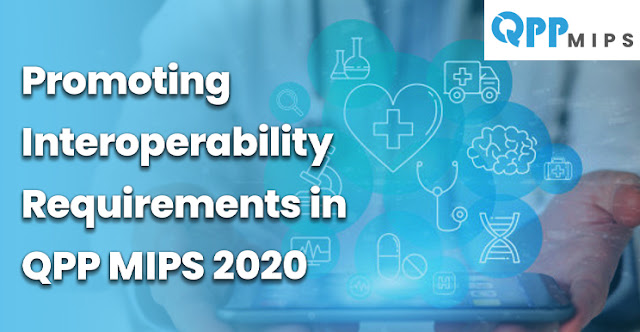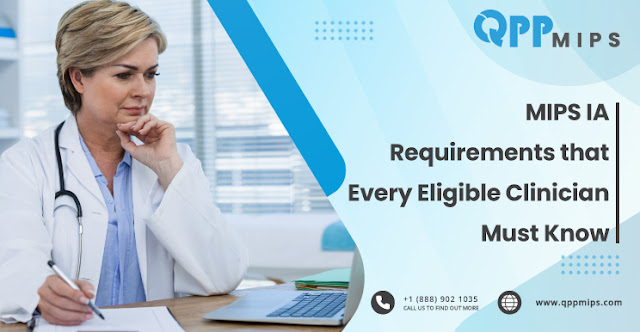
How the New Drug Prescription Rule Facilitates Physicians?
As the new proposed rules will come into action, drug manufacturers will have more say in the payment arrangements. In addition, the patients' outcomes will make clinicians accountable for their services, and they can invest in opportunities to earn more revenue, particularly via MIPs Reporting.
Right now, the payment arrangements are made on the quantity of the product rather than the quality of the product.
In such circumstances, it is impossible to move towards innovation; consequently, medical billing companies can't drive value to the claims nor can payers promote access to innovative therapies or drugs due to cost prohibitions.
CMS promised to address rising healthcare expenses, administrative burden, and the lack of quality systems, and they are gradually settling every concern that is restricting progression. In the same context, recently, we heard the great news, especially for medical billing and QPP MIPS reporting.
CMS has decided to base prescription drug payments on the patients’ outcomes. They proposed a rule on June 17 to counter rising drug prescription prices.
The healthcare landscape is constantly evolving, and a recent development in drug pricing is the new prescription cost rule that permits negotiation, even within the framework of MIPS (Merit-based Incentive Payment System) reporting. This rule aims to provide some relief from skyrocketing drug prices while keeping patient outcomes front and center. But what exactly does this new rule entail, and why does it matter for both healthcare providers and patients?
In a time when controlling healthcare costs is more critical than ever, this rule opens up new pathways to reduce the burden of prescription drugs on patients, without compromising on the quality of care they receive.
What is MIPS Reporting?
MIPS, or the Merit-based Incentive Payment System, is a program that determines Medicare payment adjustments based on the performance of healthcare providers. It factors in several categories, including the quality of care, improvement activities, and cost efficiency, all of which directly impact the provider’s reimbursement rates. General Surgery Billing Services
Essentially, MIPS serves as a way to reward healthcare providers who deliver high-quality, cost-efficient care. The inclusion of prescription drug costs in MIPS reporting emphasizes how essential it is to balance patient care with financial responsibility.
The Role of Drug Prescription Costs in MIPS
Prescription drug costs have long been a significant concern for both healthcare providers and patients. Under MIPS, drug costs contribute to the cost-efficiency metric, meaning that providers who can control these costs without sacrificing care quality may benefit from better performance scores.
As drug prices continue to rise, this has posed a challenge for providers, who are often caught between prescribing the best treatment and keeping costs down. With the new rule allowing negotiation, there's a new tool in the toolbox to help control these expenses.
Why Prescription Costs Matter in Patient Outcomes
The link between drug costs and patient outcomes is undeniable. High prescription costs can lead to treatment delays or even non-compliance, as patients may be unable to afford the necessary medication. This, in turn, leads to poorer health outcomes, increased hospitalizations, and, ultimately, higher costs for the healthcare system as a whole.
For example, a patient with diabetes who cannot afford their insulin may skip doses, leading to uncontrolled blood sugar levels and severe complications like neuropathy or kidney damage. The new rule aims to reduce such scenarios by making essential medications more affordable through negotiation.
The Shift Towards Negotiation in Drug Pricing
One of the key aspects of the new rule is the ability for healthcare providers and payers to negotiate drug prices directly with pharmaceutical companies. This shift is significant, as it moves away from the previous system where drug prices were largely dictated by manufacturers.
By allowing negotiation, the rule aims to strike a balance between ensuring pharmaceutical companies can continue innovating and reducing the financial strain on patients and the healthcare system.
Key Stakeholders in the Negotiation Process
The negotiation process involves several key stakeholders, including the government, healthcare providers, insurers, and pharmaceutical companies. Each has a vested interest in the outcome, with the government and insurers seeking to reduce healthcare costs, providers aiming to offer the best possible care, and pharmaceutical companies protecting their profit margins.
While these interests may sometimes conflict, the negotiation process is designed to find common ground that benefits patients most of all.
Benefits of Negotiating Drug Prices
Negotiating drug prices can offer a wide range of benefits. For patients, it means more affordable medications, fewer treatment delays, and better overall health outcomes. For providers, it allows them to prescribe the most effective treatments without worrying about cost constraints affecting their MIPS scores.
In the long term, widespread negotiation of drug prices could lead to a more sustainable healthcare system where costs are better controlled without sacrificing innovation or patient care.
How Negotiation Impacts Patient Outcomes
When patients have access to affordable medications, their chances of adhering to prescribed treatments improve significantly. This can lead to better management of chronic conditions, fewer complications, and overall healthier populations.
For instance, a patient with high blood pressure may be able to consistently afford their medication if prices are lowered through negotiation, reducing their risk of heart attack or stroke.
Challenges and Concerns with the New Rule
Despite the benefits, there are also challenges to implementing this new rule. One of the primary concerns is how pharmaceutical companies will respond. Many may resist price negotiations, citing the high costs of research and development for new drugs.
Additionally, the administrative burden of managing these negotiations could be significant for healthcare providers and insurers.
Addressing Pharmaceutical Company Concerns
Pharmaceutical companies argue that their pricing reflects the extensive research, testing, and regulatory approval processes required to bring new drugs to market. However, the new rule seeks to balance this reality with the need to make essential medications more accessible.
Potential compromises could include tiered pricing models based on the volume of drugs purchased or performance-based pricing, where the cost of a drug is tied to its effectiveness in real-world settings.
The Future of MIPS Reporting with the New Rule
The new rule is likely to bring about significant changes to MIPS reporting. Providers will need to carefully monitor both the costs of the drugs they prescribe and the outcomes for their patients. Over time, this could lead to more efficient, outcome-focused healthcare delivery.
Monitoring Patient Outcomes Post-Implementation
To ensure the success of the rule, healthcare providers and payers will need to closely track patient outcomes following its implementation. This will involve utilizing tools like electronic health records (EHRs) to monitor medication adherence, treatment success, and overall patient health trends. Neurology Billing Services
The Broader Impact on Healthcare Policy
If the new rule proves successful, it could pave the way for broader healthcare reforms. For example, other aspects of care, such as medical devices or hospital services, could also be subject to negotiation in the future.
The Role of Healthcare Providers in Implementation
Healthcare providers will play a crucial role in the success of the new rule. They must ensure they are fully informed about the available drug pricing options and work closely with patients to help them access affordable medications. This could involve educating patients on generic alternatives or working with insurers to find cost-effective solutions.
Preparing for the New MIPS Reporting Guidelines
To prepare for the new MIPS reporting guidelines, healthcare providers should start reviewing their current drug prescribing practices and the associated costs. By proactively addressing these issues, providers can optimize their MIPS scores while ensuring the best possible patient outcomes.
Read More: MIPS Reporting IA Requirements That Every Eligible Clinician Must Know Patients
Conclusion
The new drug prescription cost rule represents a significant shift in how drug prices are managed within the MIPS framework. By allowing negotiation, it offers a powerful tool to control healthcare costs while prioritizing patient outcomes. However, successful implementation will require collaboration among all stakeholders, including healthcare providers, insurers,
What Statistics Say About Drug Prescription Spending?
Statistics reflect that the average growth spending of 5.7 percent on national health is expected between 2020 to 2027. However, the new rule will help establish a system with lesser regulations on Value-Based Purchasing (VBP).
How CMS defines VBP?
The proposed rule will allow commercial payers to negotiate with manufacturers under new rules. However, the deal is that Medicaid beneficiaries always get the best price. The new rule will also ensure to pay the price that aligns with both objectives:
- New types of payment models
- Situations under which prices are negotiated
This value-based purchasing rule intends to accommodate new changes in the healthcare industry while giving details to stakeholders.
In actual terms, CMS defines it as and I quote:
“An arrangement or agreement intended to align pricing and/or payments to an observed or expected therapeutic or clinical value in a population (that is, outcomes relative to costs) and includes (but is not limited to):
- Evidence-based measures: linking drug expense of a drug to the effectiveness of the product, and/or
- Outcomes-based measures: linking expense of a drug to the product's actual performance in a patient or a population as compared to the other medical expenses.”
It will offer flexibility to medical billing services, Medicaid, insurance companies, and drug manufacturers.
Current Drug Regulation Rules Lack Flexibility
Seema Verma, the CMS administrator, states that the rules for Medicaid receiving the competitive price for drug prescription have not been updated in nearly thirty years.
With no new rules to accommodate the changing environment, healthcare leaders lack the opportunity to design new payment models for physicians.
The Effect on Healthcare Industry
The new proposed rule is, however, like a breath of fresh air that will support all private and governmental healthcare stakeholders based on clinical outcomes. Providers can prescribe new medicines for better results, enhancing their QPP MIPS reporting performance.
The connection between the payment and the quality of drugs will eventually create paths for innovative medical treatments, and the effectiveness of medication and therapies is likely to increase - An effective way to promote MIPS quality measures.
The Effect on Opioid Crisis
The high consumption of opioids has led to a crisis in the country. The acting secretary of Health and Human Services (HHS) says that around seventy percent of drug overdoses are related to opioids. Thus, the misuse of this drug has been alarming.
CMS counters this situation via the proposed rule, as there would be a safe passage for drug prescription, which will eventually reduce misuse or abuse of opioids.
The Future of Drug Prescription
Luckily, CMS has settled concerns that were raised by medical billing services. Moreover, the proposed drug prescription rule caters to everyone for easy access to quality healthcare, promoting QPP MIPS while reducing expenses.
We hope that this rule when implemented properly fixes many payment-related issues and reimburse physicians via value-driven methods.
Labels: healthcare industry, healthcare leaders, medical billing, medical billing services, MIPS Quality Measures, MIPS reporting, QPP MIPS, QPP MIPS reporting









